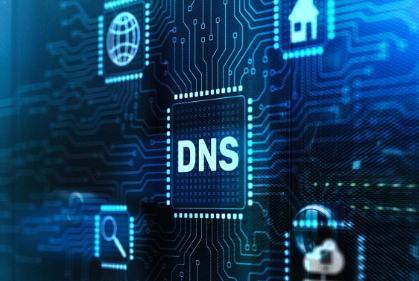DNS pollution is a common network issue. It can cause domain name resolution results to be tampered with or return incorrect IP addresses, preventing users from accessing corporate websites or even redirecting them to invalid or malicious pages. This not only impacts user experience but also severely harms a company's brand image, business operations, and search engine optimization. Therefore, it's crucial for companies to understand how to detect DNS pollution and take effective preventative measures.
The first step in detecting DNS pollution is to establish a monitoring mechanism. Companies can use multiple network nodes to simultaneously resolve domain names and detect inconsistent resolution results. If the IP addresses returned for resolving the same domain name vary significantly across different regions or carrier environments, especially if some nodes return unreachable IP addresses, this is likely a case of DNS pollution. To improve detection accuracy, companies should deploy automated monitoring systems that regularly monitor domain name resolution status and record the results, generating immediate alerts if any abnormal fluctuations occur.
The second step is to combine log analysis with detection. DNS servers and web servers generate extensive access logs. Companies can analyze the source of user requests and anomalies in the resolution process to identify signs of resolution tampering. For example, if a large number of users are unable to access a website within a short period of time, or if there's an abnormal decrease in traffic while the server itself is operating normally, this could be due to DNS pollution. Combining log monitoring with user feedback can help pinpoint issues more quickly.

Another effective detection method is to utilize third-party tools or services. Numerous DNS monitoring tools and platforms are available on the market that can monitor domain name resolution in real time and provide comparative data across global nodes. Enterprises can use these services to quickly determine whether domain names are being polluted in certain regions. Compared to in-house systems, third-party platforms offer wider coverage and can more clearly demonstrate DNS resolution performance in different regions.
After detecting DNS pollution, enterprises need to take appropriate preventative measures. First, choose a secure and reliable DNS service provider, such as an internationally renowned DNS cloud resolution platform or an enterprise-level DNS service with intelligent scheduling. These platforms typically offer enhanced anti-interference capabilities and support DNSSEC (DNS Security Extensions), which uses digital signatures to verify resolution results have been tampered with, thereby reducing the risk of DNS pollution.
Second, enterprises should deploy multiple DNS servers in different regions and network environments to effectively reduce the impact of single points of pollution. If a single line becomes polluted, the system can automatically switch to another healthy line to ensure continuous user access. Combined with intelligent resolution, it can select the optimal resolution path based on the user's location, further improving access stability and speed.
Encrypted DNS technology is also a key measure to prevent DNS pollution. Traditional DNS resolution uses clear text transmission, making it susceptible to tampering. DNS over HTTPS (DoH) or DNS over TLS (DoT) encrypts resolution requests, preventing third-party interference. These technologies are becoming increasingly popular, and enterprises should prioritize solutions that support encrypted DNS when building and maintaining websites.
Furthermore, enterprises can mitigate the impact of DNS pollution through CDN acceleration. CDN nodes are distributed globally, establishing a caching and acceleration layer between users and the origin server, prioritizing content from the closest node when users access the site. If DNS resolution in certain regions is polluted, users can still quickly access the website through CDN nodes. CDN has become a standard feature for large enterprise websites and applications that require a secure user experience.
Internally, enterprises should strengthen the management of domain names and DNS configurations to prevent negligence that could lead to exploitation by attackers. For example, regularly update domain name registration information to prevent expiration; set reasonable TTL values to minimize the duration of pollution; and strictly control DNS management permissions to prevent malicious changes to internal configurations. Furthermore, conduct regular security drills to simulate DNS pollution or resolution anomalies to verify the feasibility of emergency response plans.
Enterprises need to take a multi-pronged approach to detecting and preventing DNS pollution: Rapid detection through multi-site monitoring, log analysis, and third-party tools; preventative measures such as selecting secure DNS services, deploying multiple resolution routes, enabling encrypted DNS, and using CDNs; and strengthening internal management and security drills to ensure a rapid response when issues arise. Only by integrating DNS security into overall network security and SEO strategies can the risks of DNS pollution be minimized, ensuring stable business operations and a positive user experience.

 DNS Intelligent Resolution
DNS Intelligent Resolution

 Custom Authoritative DNS
Custom Authoritative DNS
 Cloud Computing Services
Cloud Computing Services
 Server Rental
Server Rental
 DDoS protection
DDoS protection
 About DNS.COM
About DNS.COM
 Support
Support
 Contact Us
Contact Us
 AFF
AFF
 API Docs
API Docs

 CN
CN
 EN
EN













